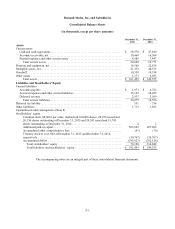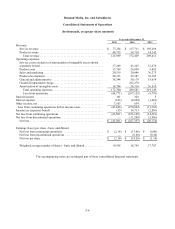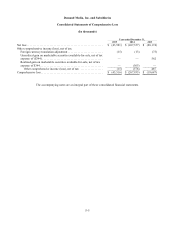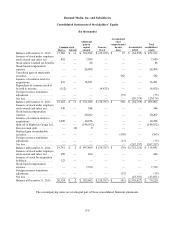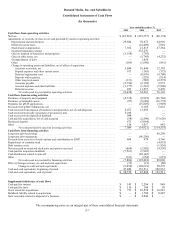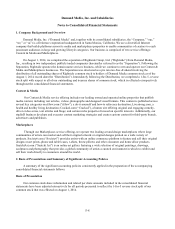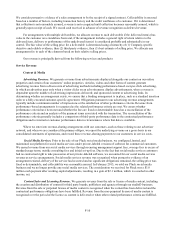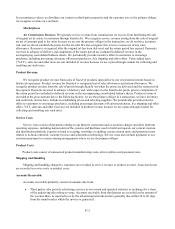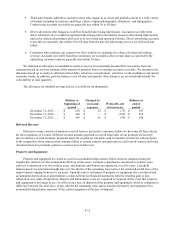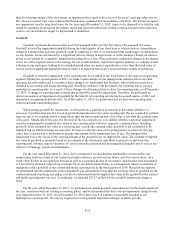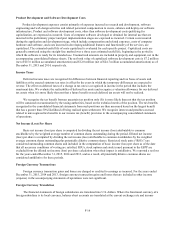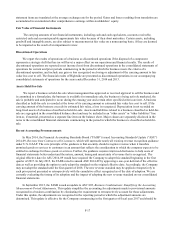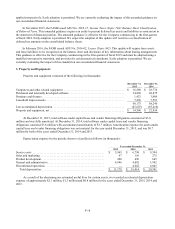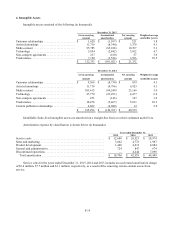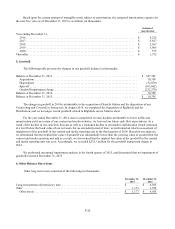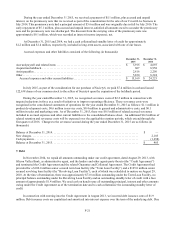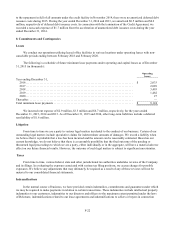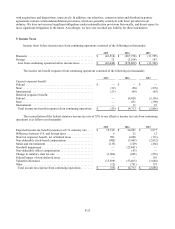Enom 2015 Annual Report Download - page 77
Download and view the complete annual report
Please find page 77 of the 2015 Enom annual report below. You can navigate through the pages in the report by either clicking on the pages listed below, or by using the keyword search tool below to find specific information within the annual report.F-13
Intangible Assets — Media Content
We capitalize the direct costs incurred to acquire our media content that is determined to embody a probable future
economic benefit. Costs are recognized as finite-lived intangible assets based on their acquisition cost to us. All costs
incurred to deploy and publish content are expensed as incurred, including the costs incurred for the ongoing
maintenance of websites on which our content resides. We generally acquire content when our internal systems and
processes provide reasonable assurance that, given predicted consumer and advertiser demand relative to our
predetermined cost to acquire the content, the content unit will generate revenue over its useful life that exceeds the cost
of acquisition. In determining whether content embodies a probable future economic benefit required for asset
capitalization, we make judgments and estimates including the forecasted number of visits and the advertising rates that
the content will generate. These estimates and judgments take into consideration various inherent uncertainties including,
but not limited to, total expected visits over the content’s useful life; the fact that our content creation and distribution
model is evolving and may be impacted by competition and technological advancements; our ability to expand existing
and enter into new distribution channels and applications for our content; and whether we will be able to generate similar
economic returns from content in the future. Management has reviewed, and intends to regularly review, the operating
performance of content in determining probable future economic benefits of our content.
Capitalized media content is amortized on a straight-line basis over its useful life, which is typically five years,
representing our estimate of when the underlying economic benefits are expected to be realized and based on our
estimates of the projected cash flows from advertising revenue expected to be generated by the deployment of such
content. These estimates are based on our plans and projections, comparison of the economic returns generated by our
content with content of comparable quality and an analysis of historical cash flows generated by that content to date.
We continue to perform evaluations of our existing content library to identify potential improvements in our
content creation and distribution platform. As a result of these evaluations, we elected to remove certain content units
from our content library, resulting in $3.4 million, $7.7 million and $3.1 million of related accelerated amortization
expense in the years ended December 31, 2015, 2014 and 2013, respectively.
Intangibles Assets — Acquired in Business Combinations
We perform valuations of assets acquired and liabilities assumed on each acquisition accounted for as a business
combination and allocate the purchase price of each acquired business to our respective net tangible and intangible
assets. Acquired intangible assets include: trade names, non-compete agreements, owned website names, artist
relationships, customer relationships, technology, media content, and content publisher relationships. We determine the
appropriate useful life by performing an analysis of expected cash flows based on historical experience of the acquired
businesses. Intangible assets are amortized over their estimated useful lives using the straight-line method which
approximates the pattern in which the economic benefits are consumed.
Long-lived Assets
We evaluate the recoverability of our long-lived tangible and intangible assets with finite useful lives for
impairment when events or changes in circumstances indicate that the carrying amount of an asset group may not be
recoverable. Such trigger events or changes in circumstances may include: a significant decrease in the market price of a
long-lived asset, a significant adverse change in the extent or manner in which a long-lived asset is being used, a
significant adverse change in legal factors or in the business climate, including those resulting from technology
advancements in the industry, the impact of competition or other factors that could affect the value of a long-lived asset,
a significant adverse deterioration in the amount of revenue or cash flows we expect to generate from an asset group, an
accumulation of costs significantly in excess of the amount originally expected for the acquisition or development of a
long-lived asset, current or future operating or cash flow losses that demonstrate continuing losses associated with the
use of a long-lived asset, or a current expectation that, more likely than not, a long-lived asset will be sold or otherwise
disposed of significantly before the end of its previously estimated useful life. We perform impairment testing at the
asset group level that represents the lowest level for which identifiable cash flows are largely independent of the cash
flows of other assets and liabilities. If events or changes in circumstances indicate that the carrying amount of an asset
group may not be recoverable and the expected undiscounted future cash flows attributable to the asset group are less


